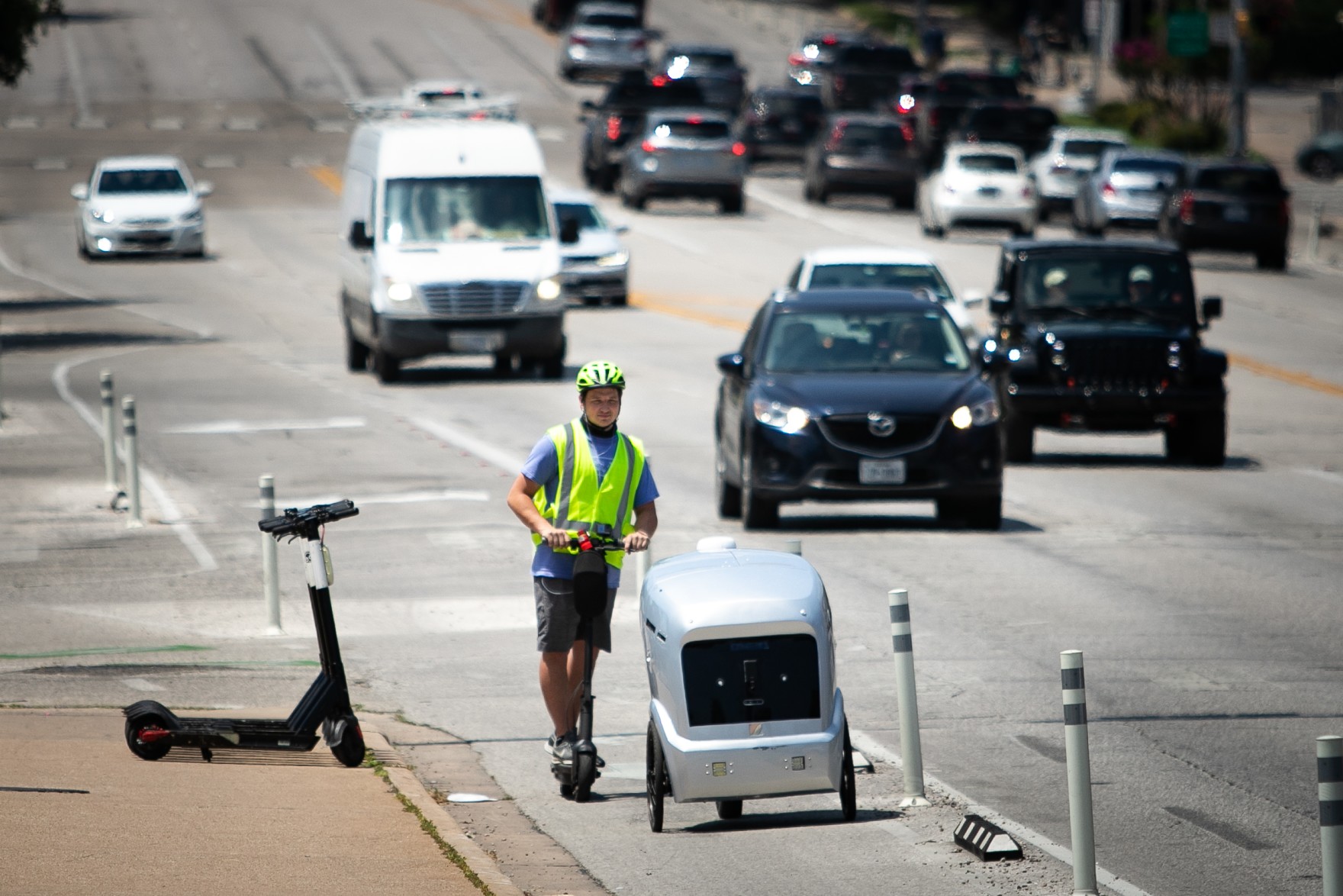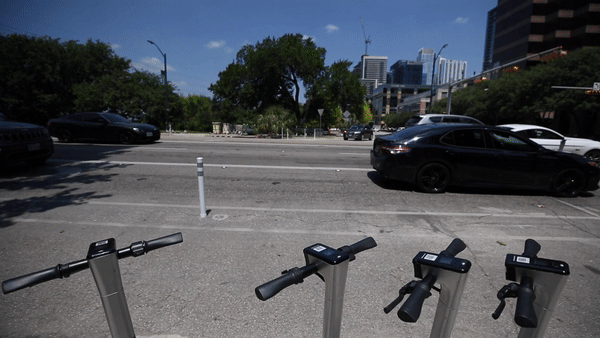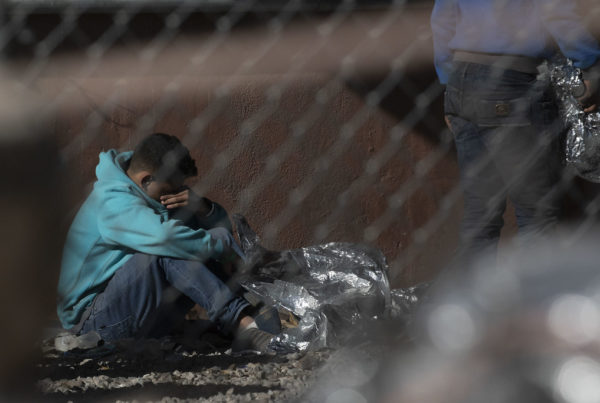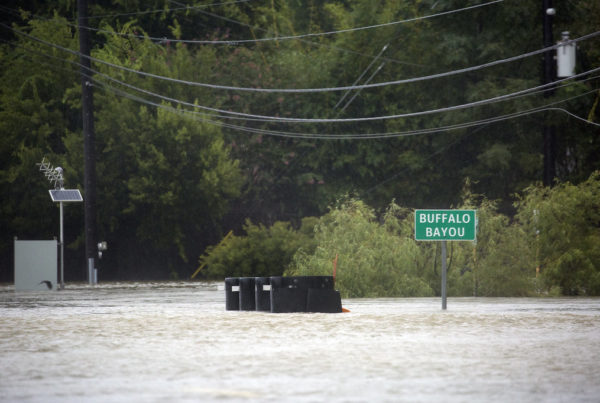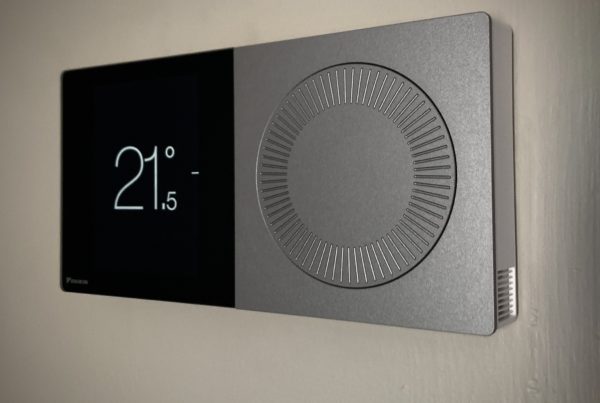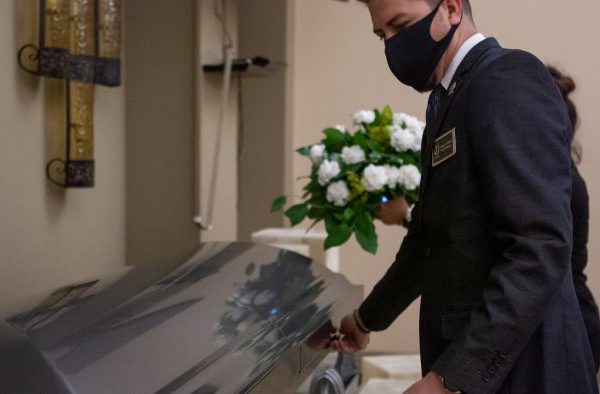In a narrow glimpse of the increasingly automated future awaiting humanity, 10 silver robots shaped like ice-cream carts are delivering Southside Flying Pizza to hungry Austinites in Travis Heights and the Central Business District.
The company behind the three-wheeled machines is hoping to grow its fleet exponentially and be part of a technological revolution in how people receive their deliveries.
“Robots are your friends,” said Luke Schneider, CEO of Michigan-based Refraction AI. “Robots are going to make your life more convenient. They’re going to make your city more sustainable, and they’re going to make your life better.”
The battery-powered devices, called REV-1s, go up to 15 mph and can recognize traffic lights and signs. They don’t go as fast as a delivery person traveling in a car would, but Refraction AI argues they can take more efficient routes through traffic and don’t have to look for parking. The REV-1 can go up hills, but if you live in a third-floor apartment, you’d have to walk downstairs to pick up your pie.
Multiple REV-1s can be monitored remotely by a single person with a stable internet connection, reducing labor costs compared to bicycle delivery. That person can intervene if hands-on operation is required.
For now, an attendant follows on an electric scooter. Once the robot’s artificial intelligence learns to navigate Austin’s unpredictable streets, the attendant will no longer be needed.
Some people expressed frustration on social media upon learning the REV-1 would occupy bike lanes. An Austin City Council resolution adopted in 2017 would have prohibited delivery robots from using bike lanes, forcing them onto sidewalks. But that was overruled by a state law passed by the Texas Legislature in 2019 that allows the robots to use the sides of roads, including bicycle lanes.
“I can look at this in one way and go, ‘Oh this is just another obstacle in the bike lanes,'” said University of Pittsburgh professor Colin Allen, who wrote a book on teaching robots right from wrong. “But then I can say, ‘It’s yet another obstacle in a bike lane and why should I have to put up with this?'”


